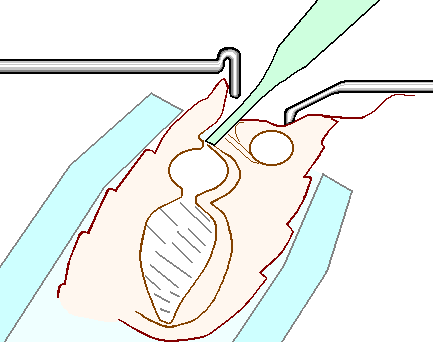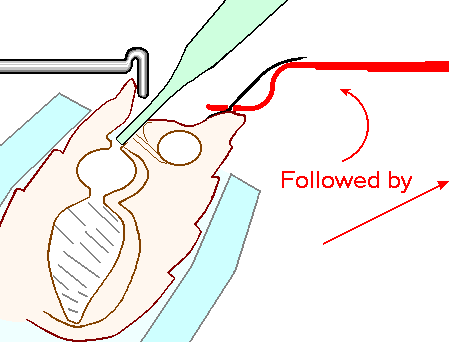|
Whilst requiring a steady hand, this method, that uses fine quality light weight
tweezers, straightens out the natural folds in the vagina and, therefore, gives easier
quicker and safer entry. The manual use of tweezers gives feedback on the tension applied
to the sting, which in turn limits any possible damage.
This method gives the easiest entry into the vagina and after a little practice
it is very quick.
The tweezers need to be fine and well polished... Ideally they should only be
used on one queen, so a large number of freshly autoclaved instruments should be available.
The insides of the jaws are polished smooth by dragging the tweezers over a folded piece of
800 'wet and dry' abrasive paper that is used in preparation of motor cars
for spraying.
| 

